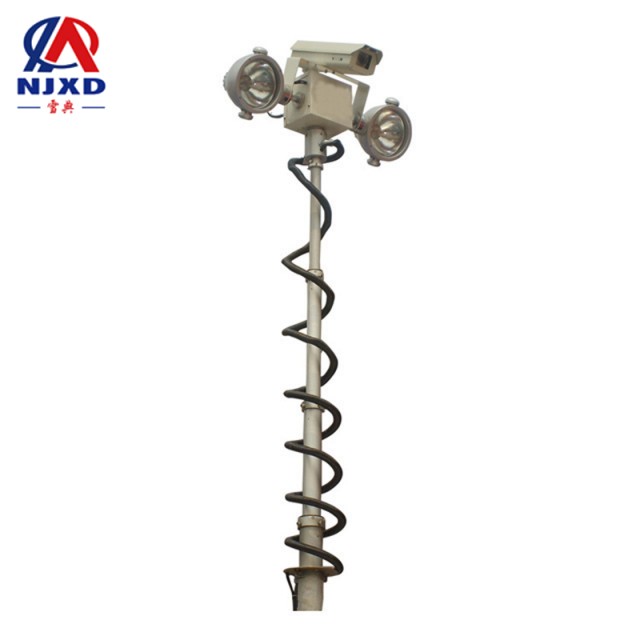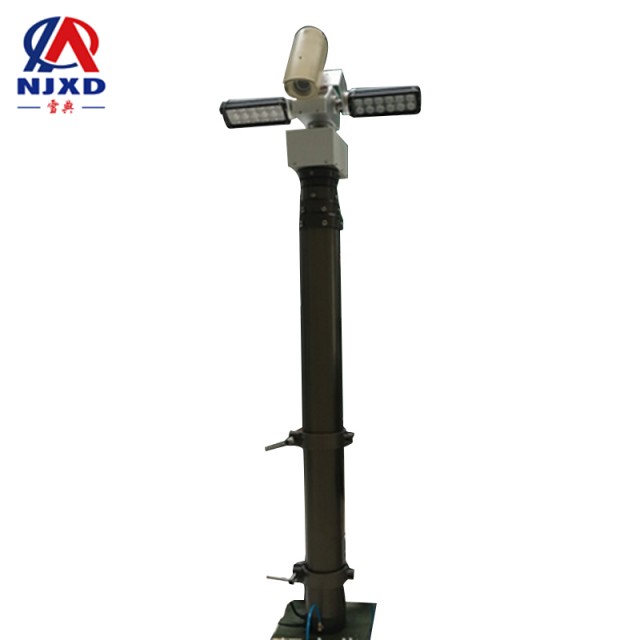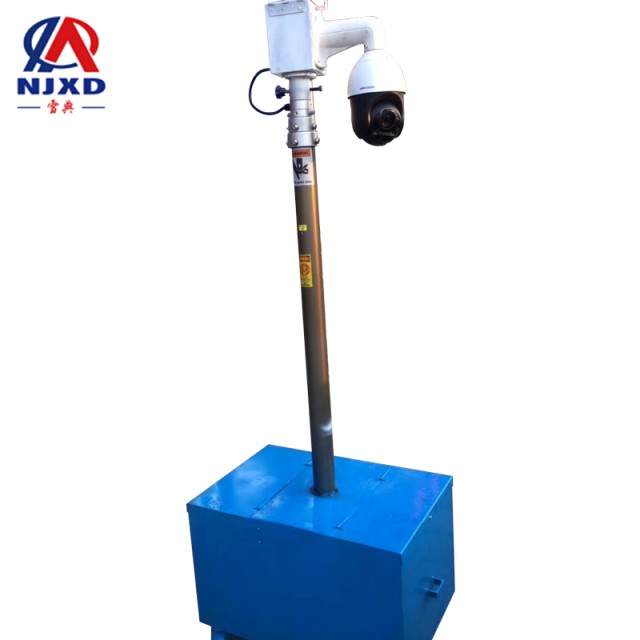NEWS
Technical parameters of road lifting monitoring
Time:2021-06-09 View:

Technical parameters
Fixed lens cameras are most frequently used in traffic surveillance cameras. These cameras should pay attention to the following main technical parameters and functions in their selection and application:
1. The definition of the camera. The horizontal resolution of the image should be greater than 500 lines. If you configure a high definition monitor, the monitoring effect will be better. Cameras with horizontal resolution greater than 500 lines have clearer and sharper imaging effect than cameras with 480 lines. Therefore, the higher the resolution, the better the performance ability of the camera.
2. The signal-to-noise ratio of the camera. In the case of good light, the signal-to-noise ratio of the camera is very good, and no noise wave points can be seen in the image. However, when the light is dark, the camera image with good signal-to-noise ratio index is still clear, with less noise wave points. If the signal-to-noise ratio index is poor, the noise wave point will flood the entire image.
3. The strong light suppression function of the camera. The Road surveillance camera requires clear shooting of the vehicle license plate at night, which requires better strong light suppression index. The camera using this technology can effectively suppress the strong light (vehicle headlight) of the facing vehicle, so that the license plate is clearly captured and the picture is true and complete. Many road surveillance cameras adopt "solar eclipse" technology, and it is good to shoot license plates at night, but "solar eclipse" often occurs during the day, which affects the beauty and integrity of the overall image.
4. The backlight compensation function of the camera. The camera takes the license plate at Night. The quality of the backlight compensation technology is directly related to whether the license plate can be clearly seen, whether the back-end video detection and analysis system can give correct judgment results. Good cameras can flexibly set and select areas for backlight compensation.
5. The color of the camera is reducing property. The camera has no specific color index, and can only use chromaticity adjustment and white balance adjustment to truly restore the color. The color reducing property of different types of cameras is different. This indicator can only be debugged and compared with the real color on site. You can select cameras with more white balance adjustment methods, such as white balance manual adjustment mode, white balance automatic tracking adjustment mode, indoor mode, outdoor mode, etc.
6. Camera digital noise reduction technology, in the dark environment, due to the problem of illuminance, camera noise will inevitably increase, and the current unique digital noise reduction technology can be adopted. The image under the condition of low illumination is clearer and more pleasing to the eye.
Digital noise reduction technology adopts professional video signal processing technology. DSP chip automatically reduces the gain amplitude of relatively static pictures by detecting and analyzing the image information in frame memory, the interference noise wave in the signal is greatly eliminated, thus effectively improving the picture definition and cleanliness.
7. The convenience of camera debugging. Besides reliable quality, the camera is also easy to install and debug. Most of the road surveillance cameras are installed on the column of 9-15 meters high. Special tool vehicles are required for installation and disassembly, which is a dangerous aerial work. If the quality is unreliable or debugging is inconvenient, it is bound to bring great cost to construction and engineering and affect normal use.
8. You can use port RS-485 of the camera to set and debug the camera. Through this port, you can remotely control the camera and modify the parameters inside the camera without adjusting the camera on site. Through this quick and convenient port, the manpower and debugging time are greatly saved. At present, many cameras have this interface function.

Device Selection
Requirements and selection of road video surveillance cameras
Road monitoring belongs to all-weather monitoring, so the requirements for front-end cameras are relatively high, and cameras are required to clearly monitor and see the license plate of vehicles running on the road, the type and color of vehicles, etc.
If the video system in road surveillance is a visual system for human beings, then the cameras in the video system are just like human eyes, and its importance is self-evident, so the selection requirements of cameras in traffic surveillance are very harsh.
The following two requirements should be considered in the selection of traffic road surveillance cameras:
1. Performance: the performance of the camera is directly related to whether a clear picture can be taken under various conditions, whether the license plate can be clearly seen at night, and whether the color of the image is true;
2. Reliability: The camera should be able to work stably in various harsh environments for a long time to ensure that the image quality does not deteriorate and the failure rate is low. If the "eyes" of a traffic monitoring system are not good or often go wrong, even if other parts of the system are perfect, the defects of the whole system are clear at a glance.

Monitoring System
With the increasing investment in road monitoring in our country, it is particularly important to establish a modern road monitoring system. Judging from the requirements of expressway industry for security protection equipment, front-end cameras should have high definition to meet the requirements of toll station monitoring and road surface monitoring, and grasp the situation of toll station area and key sections in real time.
As a highway connecting the capital Beijing to Guangzhou and Zhuhai in the South, Beijing-Zhuhai Expressway bears the heavy responsibility of north-south transportation in our country. Therefore, the road monitoring of Beijing-Zhuhai Expressway is of great significance.
The monitoring of Beijing-Zhuhai Expressway is divided into two parts: road surface monitoring and toll station monitoring. Road surface monitoring is mainly built in key sections and accident-prone areas, mainly monitoring road surface driving conditions. In the night monitoring of expressways, due to poor lighting conditions, there are many areas with frequent haze, so the road monitoring camera is required to have good low illumination performance and fog penetration function.
Toll Station monitoring is divided into two parts: Toll area and toll station square monitoring. The Square monitoring installation is speed dome, which can achieve a wide range of no dead angle and understand the situation of the whole toll station square, for important situations, you can see the local details through zoom adjustment. In the toll area monitoring, in addition to the toll lane monitoring, cameras are also installed within each toll booths to see the charging and money ticket transaction process, so as to understand the working situation of toll collectors in real time.
Main function
(1) traffic monitoring and guidance: through the system, the scene images in the monitoring area are sent back to the command center, so that the management personnel can directly grasp the traffic conditions such as vehicle queuing, congestion, signal lights, etc, adjust signal timing in time or use other means to divert traffic and change the distribution of traffic flow so as to alleviate traffic congestion.
(2) traffic guard: the management personnel shall grasp the video of traffic guard at any time, the traffic conditions of large-scale assembly activities, and mobilize the police force in time to ensure the smooth video of traffic guard.
(3) improve the ability to handle emergencies through video recording of emergencies.
(4) play the positive role of monitoring system in economic and social benefits through video recording of violations.
(5) through the network transformation of the previous analog monitoring system, it can conveniently carry out the whole network management.
